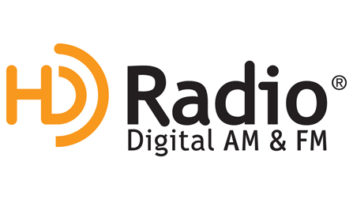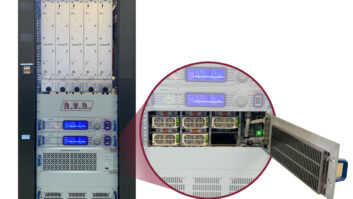This is one in a series of tips about HD Radio implementation. The series is archived at radioworld.com.
Unlike AM stations, FMs considering HD Radio conversion have a lot of implementation options.
High-level combined, low-level combined (common amplification) and separate antenna are just three of the available choices. While people may tell you that one option is “best,” the truth is that the most suitable option for your site is only determined by careful analysis of the situation.
(click thumbnail)A reject load is required for high-level combined FM systems. Outdoor loads like this help with costs by keeping the heat outside. Credit: Photo by Cris AlexanderSome of the variables that enter the equation are the TPO and antenna gain, age/type of existing transmitter and antenna, auxiliary antenna availability, transmitter building type and configuration, cooling/ventilation system size/type and condition, generator capacity and even headroom in the transmitter building.
The high-level combined option has the advantage of allowing a station to continue to use its existing analog transmitter, provided that it has adequate power capacity to overcome injector losses (typically 10–11 percent). The analog transmitter continues to operate with its Class C (or solid-state) efficiency, without the need for a linearized power amplifier.
The disadvantage is that a 10 dB injector must be used, meaning that 90 percent of the power of the digital transmitter and 10 percent or so of the analog power are dumped overboard into a reject load.
LLC
The low-level combined option has the advantage of simplicity — one transmitter taking care of both analog and digital signals. RF plumbing is simplified, as is audio routing, remote control, etc.
The downside is that efficiency is low because of the required linear power amplifier operation. A typical Class C power amplifier may exhibit 75 percent efficiency or more, and non-linear, solid-state power amplifiers can be even more efficient.
A linearized power amplifier capable of undistorted FM + HD-R operation may exhibit efficiencies from the low 40s to the mid-50s.
By way of comparison, while a Class C power amplifier operating at 10 kW with typical Class C efficiency would require in the neighborhood of 13 kW input power; a linearized PA operating at 10 kW output could require 25 kW or more input power. That’s a lot of additional power for the convenience and simplicity of a single FM + HD-R transmitter!
The separate antenna option offers the advantage of requiring no injector, no reject load and a much smaller digital transmitter. A 10 kW TPO station using a separate digital antenna, with gain comparable to the analog antenna, would require a digital transmitter capable of only 100 watts average.
Compare that to 13 kW TPO for an FM + HD-R transmitter and 11 kW/1 kW analog/digital for high-level combined operation. The downside is that dual-input antennas and interleaved antennas tend to be heavy. Structural analysis of the tower is almost always required and a structural upgrade may be needed.
Use of an existing, licensed, auxiliary antenna has the advantage of not requiring additional tower loading, but such antennas typically are located lower on the tower than the main antenna. As such, the digital coverage could well be considerably less than the analog coverage.
Depending on the location of the transmitter site relative to the target coverage area, this could be a big factor. In my experience, there seems to be a break point around 7 kW TPO where the low-level combined option becomes less attractive.
This is changing as manufacturers are now beginning to offer single-box transmitters capable of producing HD-R + FM power levels of up to 25 kW with 50 percent or better efficiency. But even with a transmitter capable of producing the desired HD-R + FM power level, the low-level combined approach may be more expensive, both in the short term, due to one-time capital costs, and long term, because of operating costs, than the high-level combined option.
What questions would you like addressed in this series? Write to Radio World.












